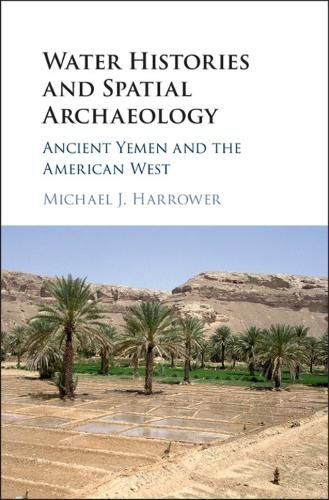Readings Newsletter
Become a Readings Member to make your shopping experience even easier.
Sign in or sign up for free!
You’re not far away from qualifying for FREE standard shipping within Australia
You’ve qualified for FREE standard shipping within Australia
The cart is loading…






This book offers a new interpretation of the spatial-political-environmental dynamics of water and irrigation in long-term histories of arid regions. It compares ancient Southwest Arabia (3500 BC-AD 600) with the American West (2000 BC-AD 1950) in global context to illustrate similarities and differences among environmental, cultural, political, and religious dynamics of water. It combines archaeological exploration and field studies of farming in Yemen with social theory and spatial technologies, including satellite imagery, Global Positioning System (GPS), and Geographic Information Systems (GIS) mapping. In both ancient Yemen and the American West, agricultural production focused not where rain-fed agriculture was possible, but in hyper-arid areas where massive state-constructed irrigation schemes politically and ideologically validated state sovereignty. While shaped by profound differences and contingencies, ancient Yemen and the American West are mutually informative in clarifying human geographies of water that are important to understandings of America, Arabia, and contemporary conflicts between civilizations deemed East and West.
$9.00 standard shipping within Australia
FREE standard shipping within Australia for orders over $100.00
Express & International shipping calculated at checkout
This book offers a new interpretation of the spatial-political-environmental dynamics of water and irrigation in long-term histories of arid regions. It compares ancient Southwest Arabia (3500 BC-AD 600) with the American West (2000 BC-AD 1950) in global context to illustrate similarities and differences among environmental, cultural, political, and religious dynamics of water. It combines archaeological exploration and field studies of farming in Yemen with social theory and spatial technologies, including satellite imagery, Global Positioning System (GPS), and Geographic Information Systems (GIS) mapping. In both ancient Yemen and the American West, agricultural production focused not where rain-fed agriculture was possible, but in hyper-arid areas where massive state-constructed irrigation schemes politically and ideologically validated state sovereignty. While shaped by profound differences and contingencies, ancient Yemen and the American West are mutually informative in clarifying human geographies of water that are important to understandings of America, Arabia, and contemporary conflicts between civilizations deemed East and West.